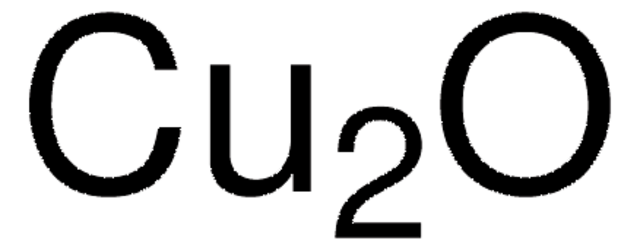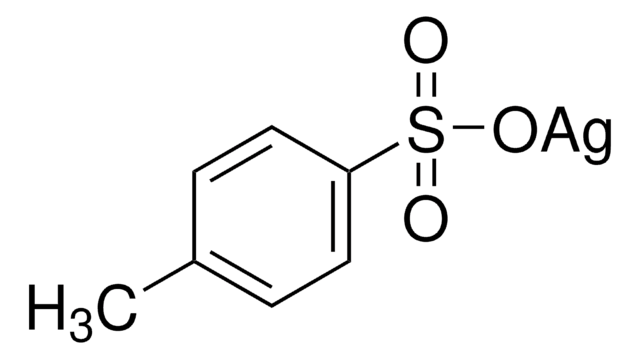Wichtige Dokumente
566284
Kupfer(I)-oxid
≥99.99% trace metals basis, anhydrous
Synonym(e):
Cuprous oxide
About This Item
Empfohlene Produkte
Qualität
anhydrous
Qualitätsniveau
Assay
≥99.99% trace metals basis
Form
powder
Dichte
6 g/mL at 25 °C (lit.)
SMILES String
[Cu]O[Cu]
InChI
1S/2Cu.O
InChIKey
BERDEBHAJNAUOM-UHFFFAOYSA-N
Suchen Sie nach ähnlichen Produkten? Aufrufen Leitfaden zum Produktvergleich
Allgemeine Beschreibung
Anwendung
- As a precursor to prepare nanoparticles, nanocrystals, and quantum dots for various applications.
- To catalyze the N-arylation of azoles under aqueous conditions using phase-transfer catalyst.
- To prepare reduced graphene oxide-based nano copper composites applicable as a sensor for the detection of dopamine.
- As a copper precursor to prepare Cu2O-TiO2 nanoparticle-based composite materials with aluminosilicate geopolymers applicable in the removal of organic pollutants from water.
Zubehör
Signalwort
Danger
H-Sätze
Gefahreneinstufungen
Acute Tox. 4 Inhalation - Acute Tox. 4 Oral - Aquatic Acute 1 - Aquatic Chronic 1 - Eye Dam. 1
Lagerklassenschlüssel
11 - Combustible Solids
WGK
WGK 3
Flammpunkt (°F)
Not applicable
Flammpunkt (°C)
Not applicable
Persönliche Schutzausrüstung
dust mask type N95 (US), Eyeshields, Faceshields, Gloves
Hier finden Sie alle aktuellen Versionen:
Besitzen Sie dieses Produkt bereits?
In der Dokumentenbibliothek finden Sie die Dokumentation zu den Produkten, die Sie kürzlich erworben haben.
Kunden haben sich ebenfalls angesehen
Artikel
Nanostructured Materials Through Ultrasonic Spray Pyrolysis
Advances in materials have often been led by the development of new synthetic methods that provide control over size, morphology and structure. The preparation of materials in a scalable and continuous manner is critical when development moves beyond lab-scale quantities.
Unser Team von Wissenschaftlern verfügt über Erfahrung in allen Forschungsbereichen einschließlich Life Science, Materialwissenschaften, chemischer Synthese, Chromatographie, Analytik und vielen mehr..
Setzen Sie sich mit dem technischen Dienst in Verbindung.









